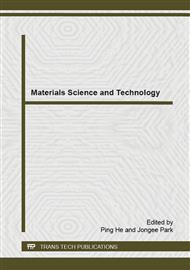p.3
p.9
p.15
p.21
p.26
p.32
p.38
p.42
Preservation of Archaeological Leather by Reinforcement with Styrene Butadiene Rubber
Abstract:
Leather has been used in Egypt since 4000 BC. Ancient Egyptians used leather as shrouds, bookbinding and manuscripts. This research aims to find a way to protect archeological leather from damage by environmental factors, without losing their archaeological appearance. Leather samples were subjected to ageing in order to simulate archaeological leather. Styrene butadiene rubber was used to coat the leather samples. Then the leather samples were dipped (immersed) in a bath containing SBR dissolved in toluene with concentrations varies from 1 to 5% by weight. The effect of leather/ SBR reinforcement was evaluated by Fourier Transform Infrared Spectrometry (FTIR) and measuring the mechanical properties (tensile strength and elongation at break (%), color difference (ΔE) and lightness (L), pH value before and after ageing. In addition, Scanning Electron Microscope (SEM) was used to study the surface morphology of samples. Finally, all samples were subjected to ageing after reinforcement. The results revealed that reinforcement of leather samples by SBR solutions having concentration 3 % gave the best results among other concentrations. The mechanical properties of treated samples were enhanced with reduction in the ΔE values. The results also showed that the pH values of the treated samples did not change even after further aging. SEM scans evidenced that SBR filled the leather surface cracks besides the formation of a protective layer on the leather surface.
Info:
Periodical:
Pages:
15-20
Citation:
Online since:
December 2014
Price:
Сopyright:
© 2015 Trans Tech Publications Ltd. All Rights Reserved
Share:
Citation:


